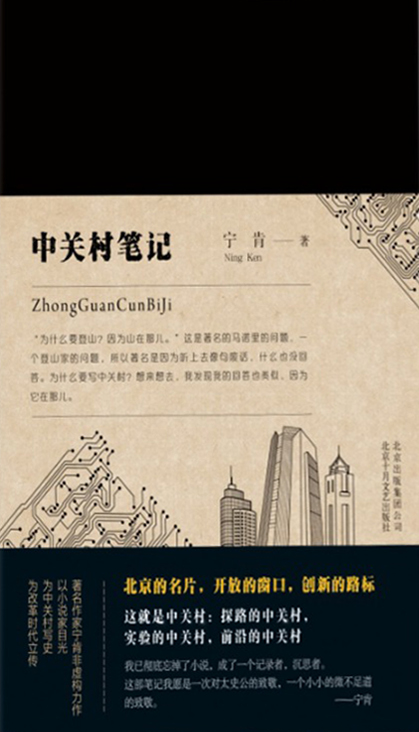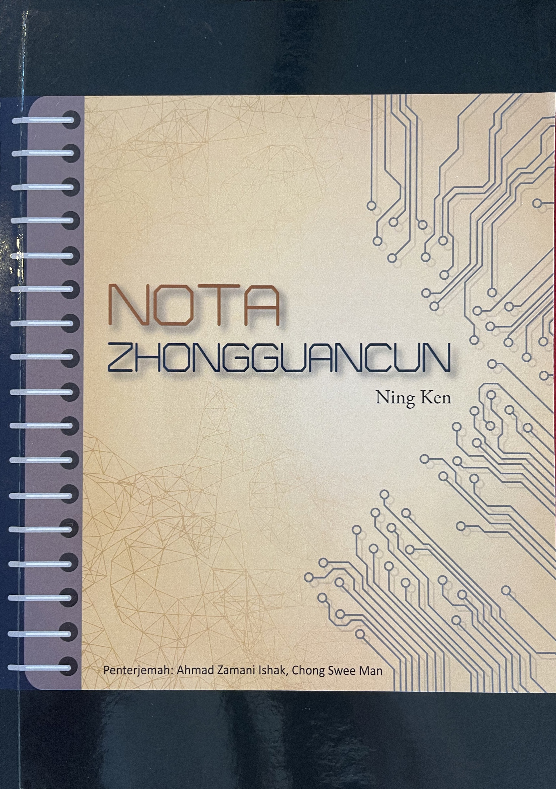
Slide the mouse
About the author
Ning Ken, born in 1959, is a Chinese contemporary novelist. His essay series on Tibet Silent is the Other Shore made him one of the representative writers of “new essays”. In 1998, he began to create full-length novels, among which four were published, including A Covered City, A Silent Gate, Craters and Heaven•Tibet. Mercy of a Great Master is his collection of essays. Ning won a number of awards successively, including the second and fourth Lao She Literature Award, the first Shi Nai’an Literature Award, the seventh Beijing Literature & Art Award. He was also nominated for the eighth Mao Dun Literature Prize, the first “A Dream in Red Mansions” Award (Award for Chinese Full-length Novels in the World sponsored by Hong Kong Baptist University), and the first Newman Prize for Chinese Literature.
Book Introduction
“Why did you want to climb Mount Everest?” “Because it’s there,” replied Mallory, a mountaineer who gave this seemingly nonsensical answer to the question. Then why did I write about Zhongguancun? My answer would be the same, “Because it’s there.”
Many years on, Zhongguancun still proves elusive to me. On a fine day, Zhongguancun and its adjacent Shangdi, both located in the northwest of Beijing, present a beautiful profile against the Western Hills, the setting sun, the evening glow. Its skyscrapers with steel and glass walls glow and glitter, fascinating those who pass by.
Since 2015 I have been fascinated by this area of Beijing. I still remember the day when I wrote on the margin of a book, “The road leading from literature seems to be another phase of my university career. It all began on a flight to Mount Wuyi.” On that day, April 21, 2015, I was reading Secrets of Silicon Valley: What Everyone Else Can Learn from the Innovation Capital of the World by Deborah Perry Piscione in my airplane seat. Such a book would normally never appeal to me, who had long been fascinated by modernist novels. How could Kafka or Calvino have anything in common with Silicon Valley? (Or did they?) Anyway, in 2015 I was eager for a paradigm shift. When one has been submerged in a certain state for so long, he/she naturally desires a break from routine. For two decades I had been submerged in literature, which had turned me into a sensitive soul. Now I wanted something as solid as a rock. In the early 1990s I switched from poetry to advertising. Five years later I wrote “The Disappearance of a Conventional Writer”, illustrating “my enlightenment about literature as an outsider.” Then I switched back to being a conventional writer, publishing five novels on the trot.
On that flight I wrote, “When you step into a new world, like that of Silicon Valley, you will once again see the boundary of literature. Viewing literature as an outsider, you regain the experience of many years before.” Just because Zhongguancun was there, I read Secrets of Silicon Valley, which proved to be a brand-new experience. The book, in its final chapters, compares Zhongguancun with Silicon Valley and the high-tech area in Israel. While it pays compliments to Israel, it throws doubts on Zhongguancun. Piscione wrote, “Reports on the ability of the rising giant in the East to become the new global hub of innovation are conflicted… The problem with Zhongguancun, however, is that it has substantial weaknesses. The immigrant talent pool is thin... Lenovo is now poised to overtake one of the original Silicon Valley icons, Hewlett-Packard, as the largest PC maker in the world. Regardless, this would be the first time in the past several centuries that a Chinese company has been number one in a global technology sector. At the same time, Silicon Valley has long since moved on to other areas of dominance in search engines, social media, and big data. It would seem that Chinese companies have overtaken the past, but not yet the future of Silicon Valley.” Those words were totally different from what I had read before. They transformed my thinking, which was exactly what I wanted. I was particularly amazed by the fact that middle-aged and older entrepreneurs far outnumber younger ones in Silicon Valley. Piscione wrote that the most innovative age bracket is between 55 and 64. I was 56 in 2015.
Quite often, doubts speak louder than compliments, as they demonstrate the position of Zhongguancun in the world. To tell the truth, Deborah Perry Piscione had a higher appraisal of Zhongguancun than I did. At that time, I did not know that Zhongguancun had grown to be one of the world’s three innovation centers, and had become a focus of dispute. For me, it was a district in Beijing that had transformed the city and far beyond. It stood there and posed a challenge to me. It was a peak for me to climb outside the sphere of literature, but before that I had to probe into the world of Silicon Valley and the major players in it, such as Yahoo, Google, Cisco, Apple and Oracle. Then I could have a better understanding of the connection between literature and the world today.
When I was interviewed by Fiction Monthly, I told them that I was reading three non-fiction books simultaneously, namely Secrets of Silicon Valley by Piscione, China’s New Revolution: 1980-2006 years, from Zhongguancun, the Chinese Society by Ling Zhijun and China Emerging 1978-2018 by Wu Xiaobo. Those books helped feel something outside literature.
After reading those books, I began to immerse myself in Zhongguancun, which was still strange to me, both internally and externally. I traversed it by car, by underground and by motorbike. I became a part of Zhongguancun and, equally, Zhongguancun became a part of me. I passed the brown building of the Institute of Physics, Chinese Academy of Sciences to the Academy of Mathematics and Systems Science and a number of key national laboratories. I paid tribute to the bronze statue of Feng Kang, a mathematician, and listened attentively to anecdotes about him told by his colleagues and students. I had never met so many academicians before. I visited Founder Mansion and saw the secretary of the late Wang Xuan in his memorial hall. I met Liu Chuanzhi on the eighteenth floor of Raycom Infotech Park, Wu Gansha on Chuangyi Street, Su Di at The Garage Coffee and Cheng Wei in Digital Valley, all great names in the district. In the past I had gone to Zhongguancun on a yearly basis. Now I was going there twice or even three times a week. The “interior” of Zhongguancun is represented by its people. Each of them is a deep well of time, a window on history. Even young ones born in the 1980s seem to be channels of time. Of course, the older ones, such as Liu Chuanzhi, Wang Hongde and Wang Jizhi are treasures of time.
I have completely switched from being a novelist to being a recorder and thinker. Certainly, I will return to literature with a new perspective and approach, but, for the time being, this collection of sketches is my humble attempt at historiography.
Many years on, Zhongguancun still proves elusive to me. On a fine day, Zhongguancun and its adjacent Shangdi, both located in the northwest of Beijing, present a beautiful profile against the Western Hills, the setting sun, the evening glow. Its skyscrapers with steel and glass walls glow and glitter, fascinating those who pass by.
Since 2015 I have been fascinated by this area of Beijing. I still remember the day when I wrote on the margin of a book, “The road leading from literature seems to be another phase of my university career. It all began on a flight to Mount Wuyi.” On that day, April 21, 2015, I was reading Secrets of Silicon Valley: What Everyone Else Can Learn from the Innovation Capital of the World by Deborah Perry Piscione in my airplane seat. Such a book would normally never appeal to me, who had long been fascinated by modernist novels. How could Kafka or Calvino have anything in common with Silicon Valley? (Or did they?) Anyway, in 2015 I was eager for a paradigm shift. When one has been submerged in a certain state for so long, he/she naturally desires a break from routine. For two decades I had been submerged in literature, which had turned me into a sensitive soul. Now I wanted something as solid as a rock. In the early 1990s I switched from poetry to advertising. Five years later I wrote “The Disappearance of a Conventional Writer”, illustrating “my enlightenment about literature as an outsider.” Then I switched back to being a conventional writer, publishing five novels on the trot.
On that flight I wrote, “When you step into a new world, like that of Silicon Valley, you will once again see the boundary of literature. Viewing literature as an outsider, you regain the experience of many years before.” Just because Zhongguancun was there, I read Secrets of Silicon Valley, which proved to be a brand-new experience. The book, in its final chapters, compares Zhongguancun with Silicon Valley and the high-tech area in Israel. While it pays compliments to Israel, it throws doubts on Zhongguancun. Piscione wrote, “Reports on the ability of the rising giant in the East to become the new global hub of innovation are conflicted… The problem with Zhongguancun, however, is that it has substantial weaknesses. The immigrant talent pool is thin... Lenovo is now poised to overtake one of the original Silicon Valley icons, Hewlett-Packard, as the largest PC maker in the world. Regardless, this would be the first time in the past several centuries that a Chinese company has been number one in a global technology sector. At the same time, Silicon Valley has long since moved on to other areas of dominance in search engines, social media, and big data. It would seem that Chinese companies have overtaken the past, but not yet the future of Silicon Valley.” Those words were totally different from what I had read before. They transformed my thinking, which was exactly what I wanted. I was particularly amazed by the fact that middle-aged and older entrepreneurs far outnumber younger ones in Silicon Valley. Piscione wrote that the most innovative age bracket is between 55 and 64. I was 56 in 2015.
Quite often, doubts speak louder than compliments, as they demonstrate the position of Zhongguancun in the world. To tell the truth, Deborah Perry Piscione had a higher appraisal of Zhongguancun than I did. At that time, I did not know that Zhongguancun had grown to be one of the world’s three innovation centers, and had become a focus of dispute. For me, it was a district in Beijing that had transformed the city and far beyond. It stood there and posed a challenge to me. It was a peak for me to climb outside the sphere of literature, but before that I had to probe into the world of Silicon Valley and the major players in it, such as Yahoo, Google, Cisco, Apple and Oracle. Then I could have a better understanding of the connection between literature and the world today.
When I was interviewed by Fiction Monthly, I told them that I was reading three non-fiction books simultaneously, namely Secrets of Silicon Valley by Piscione, China’s New Revolution: 1980-2006 years, from Zhongguancun, the Chinese Society by Ling Zhijun and China Emerging 1978-2018 by Wu Xiaobo. Those books helped feel something outside literature.
After reading those books, I began to immerse myself in Zhongguancun, which was still strange to me, both internally and externally. I traversed it by car, by underground and by motorbike. I became a part of Zhongguancun and, equally, Zhongguancun became a part of me. I passed the brown building of the Institute of Physics, Chinese Academy of Sciences to the Academy of Mathematics and Systems Science and a number of key national laboratories. I paid tribute to the bronze statue of Feng Kang, a mathematician, and listened attentively to anecdotes about him told by his colleagues and students. I had never met so many academicians before. I visited Founder Mansion and saw the secretary of the late Wang Xuan in his memorial hall. I met Liu Chuanzhi on the eighteenth floor of Raycom Infotech Park, Wu Gansha on Chuangyi Street, Su Di at The Garage Coffee and Cheng Wei in Digital Valley, all great names in the district. In the past I had gone to Zhongguancun on a yearly basis. Now I was going there twice or even three times a week. The “interior” of Zhongguancun is represented by its people. Each of them is a deep well of time, a window on history. Even young ones born in the 1980s seem to be channels of time. Of course, the older ones, such as Liu Chuanzhi, Wang Hongde and Wang Jizhi are treasures of time.
I have completely switched from being a novelist to being a recorder and thinker. Certainly, I will return to literature with a new perspective and approach, but, for the time being, this collection of sketches is my humble attempt at historiography.
Chapter contents
Contents
An Introduction 1
Feng Kang’s Story (1) 4
Note 1: Silent Cornerstone 16
The First Person 18
Note 2: Coincidence 32
The Pull of the Future 33
Note 3: Time 51
Tilting at Windmills 52
Note 4: Volcano 58
China’s Lenovo (1) 60
Note 5: History 75
Feng Kang’s Story (2) 77
Note 6: Feng Kang School 91
MS-2401 92
Note 7: Another Type of Knowledge Transmitted from Father to Son 104
A Millennium Covenant 106
Note 8: Installation after a Millennium 141
China’s Lenovo (II) 143
Note 9: Shadows of Everything 157
Wang’s Code 159
Note 10: Spirit of Chinese Characters 164
Feng Five-yuan 166
Note 11: The Grassroots Spirit 171
Feng Kang’s Story (3) 173
Note 12: A Bronze Statue that Stands Forever 188
Legend of Lenovo (3) 190
Note 13: Mount Tai 206
KV300 207
Note 14: Disease and Creation 212
Internet 214
Note 15: Traces of Days Gone By 222
Legend of Lenovo (4) 226
Note 16: “Gathering Momentum” 233
“Fingerprints” 235
Note 17: The New Generation 241
Garage Café 243
Note 18: Zhongguancun, Beijing 260
Sharing for a Better World 262
Note 19: Ongoing entrepreneurship and innovation 290
Postscript 293
Appendix 294




